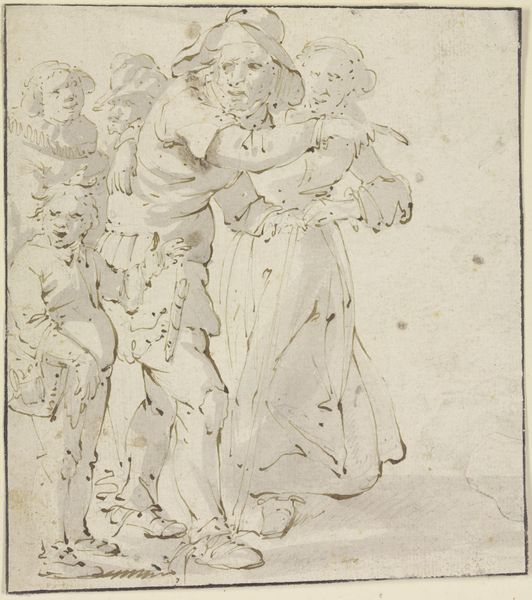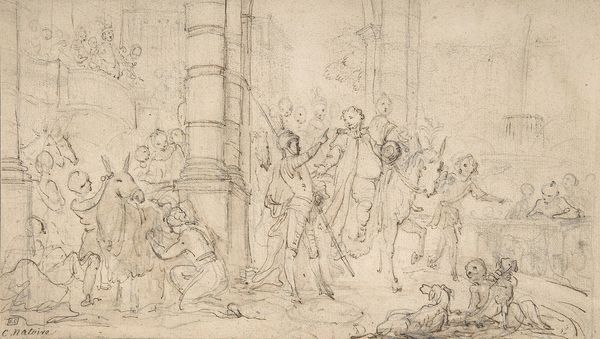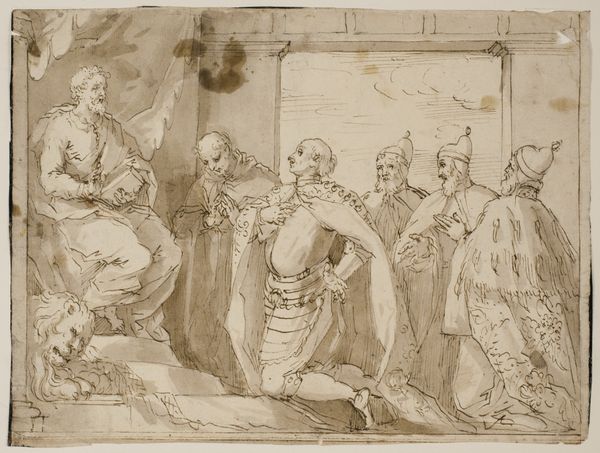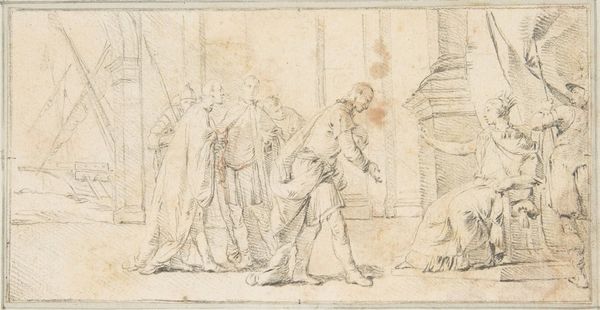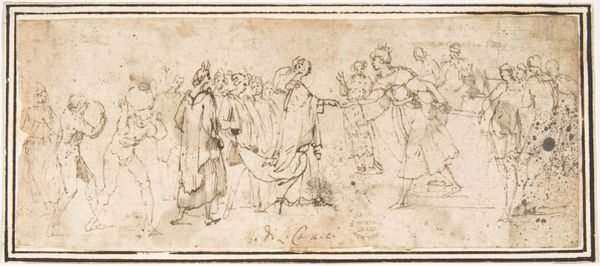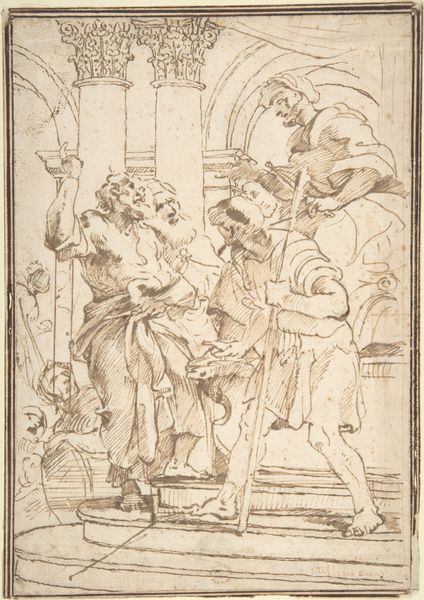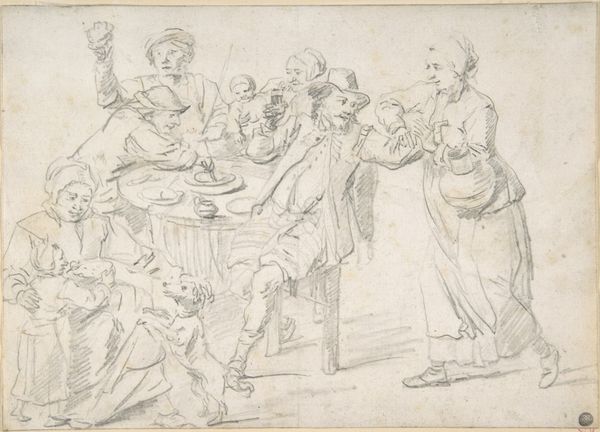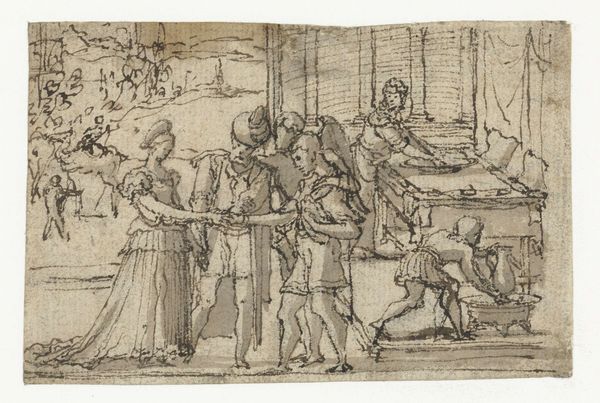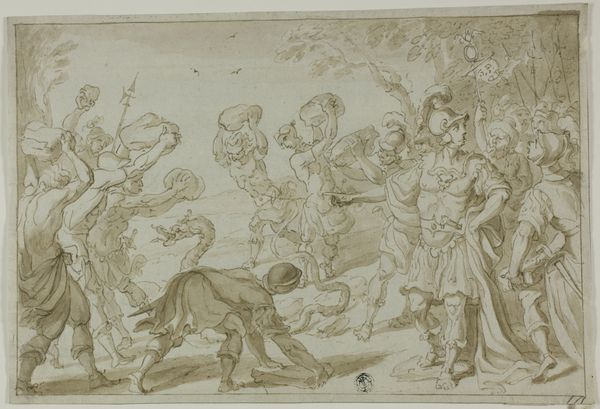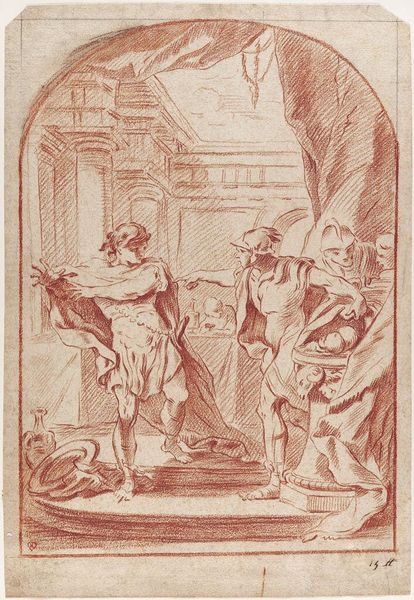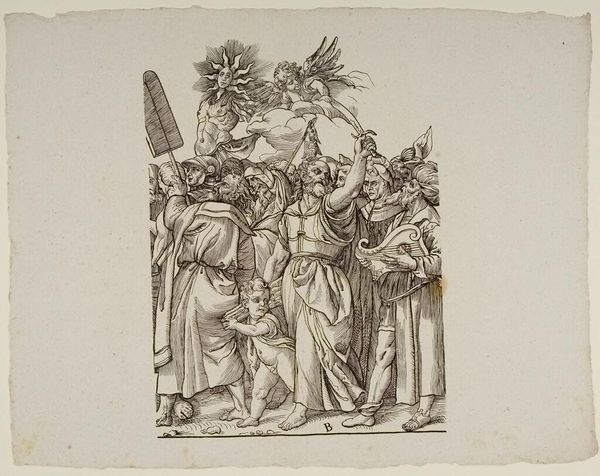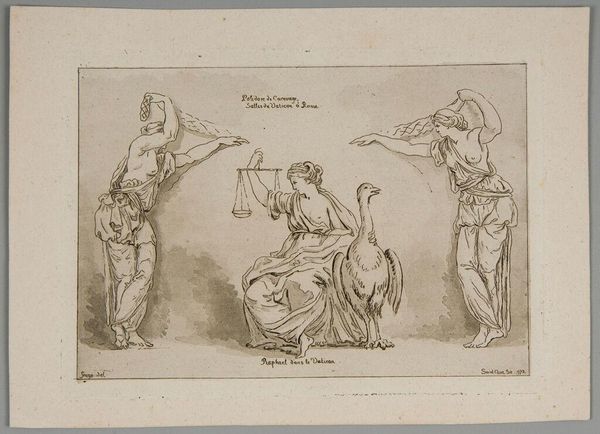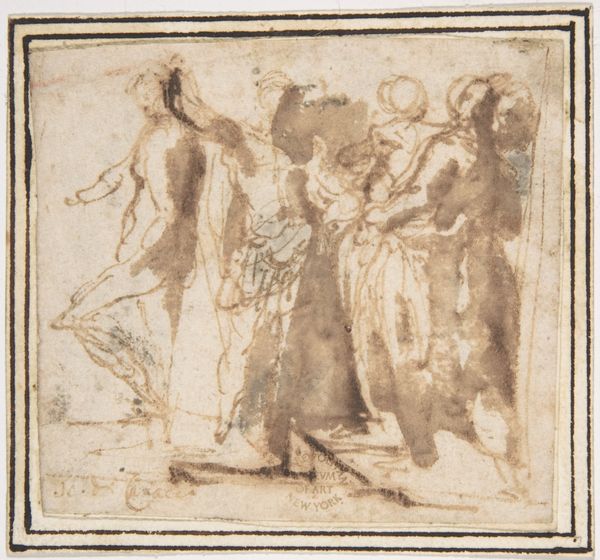
drawing, ink
#
drawing
#
ink drawing
#
narrative-art
#
baroque
#
pen sketch
#
etching
#
figuration
#
ink
#
history-painting
Dimensions: height 112 mm, width 408 mm
Copyright: Rijks Museum: Open Domain
Curator: This linear drawing in ink is held here at the Rijksmuseum. It is by Nicolas Poussin, dating from the 17th century. The artwork is titled, "Optocht van bacchanten," which translates to "Procession of Bacchants." Editor: My initial impression is one of controlled frenzy. The figures are active and joyous, but the composition, rendered simply in pen and ink, keeps everything tightly within bounds. It’s an interesting duality. Curator: The Baroque style favored dynamism, and this work, even in its preliminary sketch form, captures that sense of energetic movement, specifically a revelry. Bacchants, of course, were the followers of Bacchus, the Roman god of wine and ritual madness. These scenes were really quite popular in art as allegories, expressing social tensions concerning control and freedom. Editor: Indeed, the symbolism is powerful here. The centaur blowing the horn, figures embracing with what appear to be animal skins...all speak to ecstatic abandonment, a shedding of civilized restraint. The central figure, carrying some kind of object...is that perhaps the thyrsus, a staff entwined with ivy, representing Bacchus himself? It adds to the overall mood of unrestrained passion. Curator: Precisely. Poussin, even in his drawings, had such incredible historical acuity. It reflects his broad engagement with classicism, but this isn't some straightforward classical quotation. The choice to portray this Dionysian rite in such a spare format actually adds weight. Think of how this drawing might have influenced his more finished history paintings...how that feeling, that wild abandon, becomes monumentalized through the prestige that followed history painting in academic and state circles. Editor: Looking at the faces, there’s a clear connection between intoxication and spiritual communion, even violence. We can see traces of how ancient ritualistic symbols resurface across time to indicate catharsis. And again, Poussin captures that ambiguity, that intersection, very skillfully. Curator: Right, Poussin uses an antique subject here to talk to us about then and about now, doesn't he? All made possible thanks to that initial dynamism in the underdrawing, here on display at the Rijksmuseum. Editor: Indeed, there is much to be gleaned from this, apparently simple, sketch in ink.
Comments
No comments
Be the first to comment and join the conversation on the ultimate creative platform.
